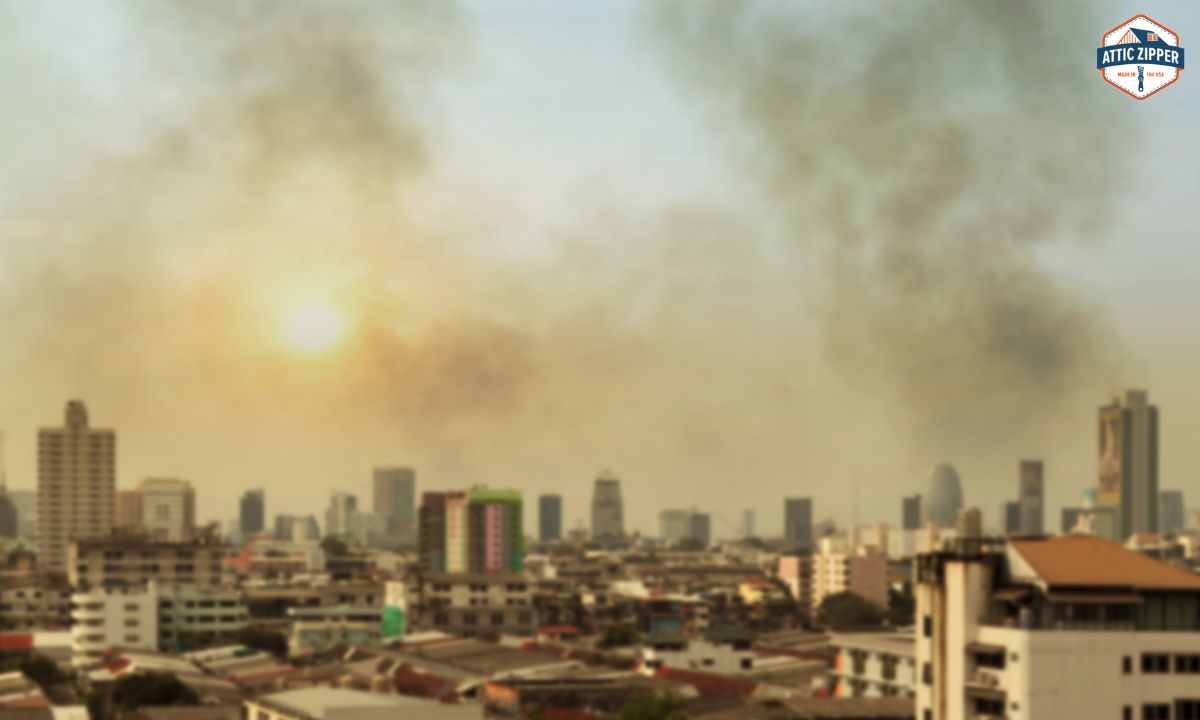10 Apr Breathing Polluted Air Dramatically Increases the Risk of Serious COVID-19 Effects
The impact of air pollution on health has long been established, but a newly released study from Harvard University shines an even brighter spotlight on the concerning connection between polluted air and the severity of COVID-19 outcomes. This groundbreaking research suggests that long-term exposure to air pollution could not only exacerbate existing respiratory conditions but also significantly raise the risk of severe illness or death from the novel coronavirus.
With millions of Americans living in areas plagued by high pollution levels, the study raises urgent public health concerns. Let’s dive deeper into what this study reveals and why the findings are so critical in the fight against COVID-19.
What Does the Harvard Study Say?
Researchers from the Harvard T.H. Chan School of Public Health conducted a nationwide study examining the relationship between air pollution and COVID-19 death rates. Their analysis, which included data from over 3,000 U.S. counties, found that even small increases in long-term exposure to fine particulate matter (PM2.5) — tiny particles primarily generated by car emissions, industrial plants, and power facilities — resulted in a significantly higher risk of death from the virus.
To put this into perspective, just a one microgram-per-cubic-meter increase in PM2.5 exposure was associated with a 15% increase in the COVID-19 death rate. These findings indicate that regions with higher pollution levels could face disproportionate strain on healthcare systems, with more hospitalizations, severe cases, and fatalities.
How Does Air Pollution Affect Respiratory Health?
Air pollution, especially particulate matter, is well-known for its detrimental effects on respiratory and cardiovascular health. Long-term exposure to polluted air can cause or worsen health conditions such as:
- Asthma
- Chronic obstructive pulmonary disease (COPD)
- Cardiovascular diseases like heart attacks and strokes
- Lung cancer
These pre-existing health issues make individuals more vulnerable to infections like COVID-19, which primarily attacks the respiratory system. This connection between air pollution and weakened respiratory health makes it clear that people living in polluted areas are at a significantly higher risk of developing severe complications if they contract the virus.
Why Air Pollution is More Dangerous During a Pandemic
The global COVID-19 pandemic has brought into sharp focus how environmental factors such as air pollution can worsen public health crises. For individuals living in polluted areas, the effects of COVID-19 can be far more severe. Pollution causes chronic inflammation in the respiratory system, weakens lung function, and increases the likelihood of respiratory infections. COVID-19, which affects the lungs, can become more deadly when a person’s lungs are already compromised due to prolonged exposure to polluted air.
Moreover, pollution doesn’t just affect the respiratory system. Long-term exposure to pollutants can cause systemic inflammation, which affects the body’s ability to fight off infections. The Harvard study provides strong evidence that people living in polluted regions are at higher risk for severe COVID-19 outcomes, and this is particularly concerning for urban areas with high pollution levels.
Air Pollution and Environmental Justice: A Disproportionate Impact
One of the study’s most alarming revelations is the disproportionate impact of air pollution on certain communities. Low-income and minority populations, particularly communities of color, tend to live in areas with higher levels of pollution, often referred to as “sacrifice zones.” These are areas where industrial facilities, high traffic, and other pollution sources are concentrated.
Many of these communities already face a higher burden of chronic illnesses like asthma and heart disease, making them even more susceptible to severe outcomes from COVID-19. Former EPA official Mustafa Santiago Ali emphasized that systemic racism and discrimination are key drivers behind why these communities are more heavily impacted by both pollution and COVID-19.
Who is Most at Risk?
Populations most vulnerable to the heightened risks from COVID-19 due to air pollution include:
- Residents of large urban areas with high levels of traffic and industrial activity.
- Low-income and minority communities, particularly Black, Hispanic, and Indigenous populations.
- People with pre-existing conditions, such as asthma, heart disease, and diabetes.
These individuals are already dealing with the compounded effects of air pollution on their health, and the pandemic has only intensified their risk.
The Long-Term Impact of Air Pollution on Health
Air pollution is not just a short-term problem; it has long-lasting impacts on public health. Over time, exposure to particulate matter can lead to premature death due to heart disease, respiratory illnesses, and cancer. The American Lung Association’s “State of the Air” report found that 141 million Americans live in counties with unhealthy air quality. This means nearly half of the U.S. population is breathing polluted air daily, putting their long-term health at risk.
With the ongoing pandemic, the dangers of air pollution have become even more pressing. The added stress of COVID-19 on already compromised lungs could lead to more severe health outcomes for those who live in these high-risk areas.
What Can Be Done?
Addressing the problem of air pollution requires both individual and policy-level solutions. On a personal level, people can take steps to reduce their exposure to outdoor pollutants by:
- Monitoring air quality: Keep track of the air quality index (AQI) in your area and limit outdoor activities when pollution levels are high.
- Using air filters: Installing high-efficiency particulate air (HEPA) filters in homes can reduce indoor air pollution.
- Sealing off attic spaces: Since attics can often be a source of indoor air pollution, consider using attic zipper covers to seal off potential entry points for polluted air and particulate matter.
Protect Your Home with Attic Zipper Covers
To ensure your family breathes cleaner air indoors, consider investing in high-quality attic zipper covers. These covers can help seal off your attic, preventing dust, dirt, and outdoor pollutants from entering your living spaces. With air pollution posing a serious risk to respiratory health — especially in the face of COVID-19 — it’s more important than ever to take proactive measures in safeguarding your home environment.
The Role of Government and Policy Makers
On a broader level, stricter regulations on air pollution and environmental protections are essential. The Environmental Protection Agency (EPA) plays a crucial role in enforcing air quality standards, and continuous efforts are needed to reduce pollution from vehicles, power plants, and industrial sources. However, the current push toward deregulation during the pandemic is a cause for concern, as it could further worsen air quality in many regions.
Why It’s Crucial to Act Now
The Harvard study confirms what many experts have long suspected: the combination of air pollution and COVID-19 can be deadly. Given the ongoing threat of the pandemic, it’s critical to take immediate action to improve air quality and protect vulnerable populations. Reducing pollution not only helps in the fight against COVID-19 but also improves public health in the long term.
Conclusion
The connection between air pollution and the severity of COVID-19 cannot be ignored. The findings from Harvard University underscore the urgent need to address environmental inequalities and reduce pollution levels, especially in heavily impacted areas. By doing so, we can protect the most vulnerable populations from both the immediate and long-term health effects of polluted air.
FAQs
- Does air pollution directly cause COVID-19? No, air pollution doesn’t cause COVID-19, but it significantly worsens the health outcomes for those who contract the virus.
- Who is most at risk from air pollution and COVID-19? People living in high-pollution areas, particularly in urban or industrial zones, and those with pre-existing respiratory or cardiovascular conditions are most at risk.
- Can improving air quality reduce COVID-19 deaths? Yes, reducing air pollution could decrease the severity of COVID-19 symptoms and lower death rates in polluted regions.
- How can I protect my home from outdoor air pollution? Using air purifiers and attic zipper covers can help reduce the infiltration of outdoor pollutants into your home.
- What are the long-term health effects of air pollution? Long-term exposure to air pollution can lead to chronic respiratory diseases, heart disease, and even premature death.



